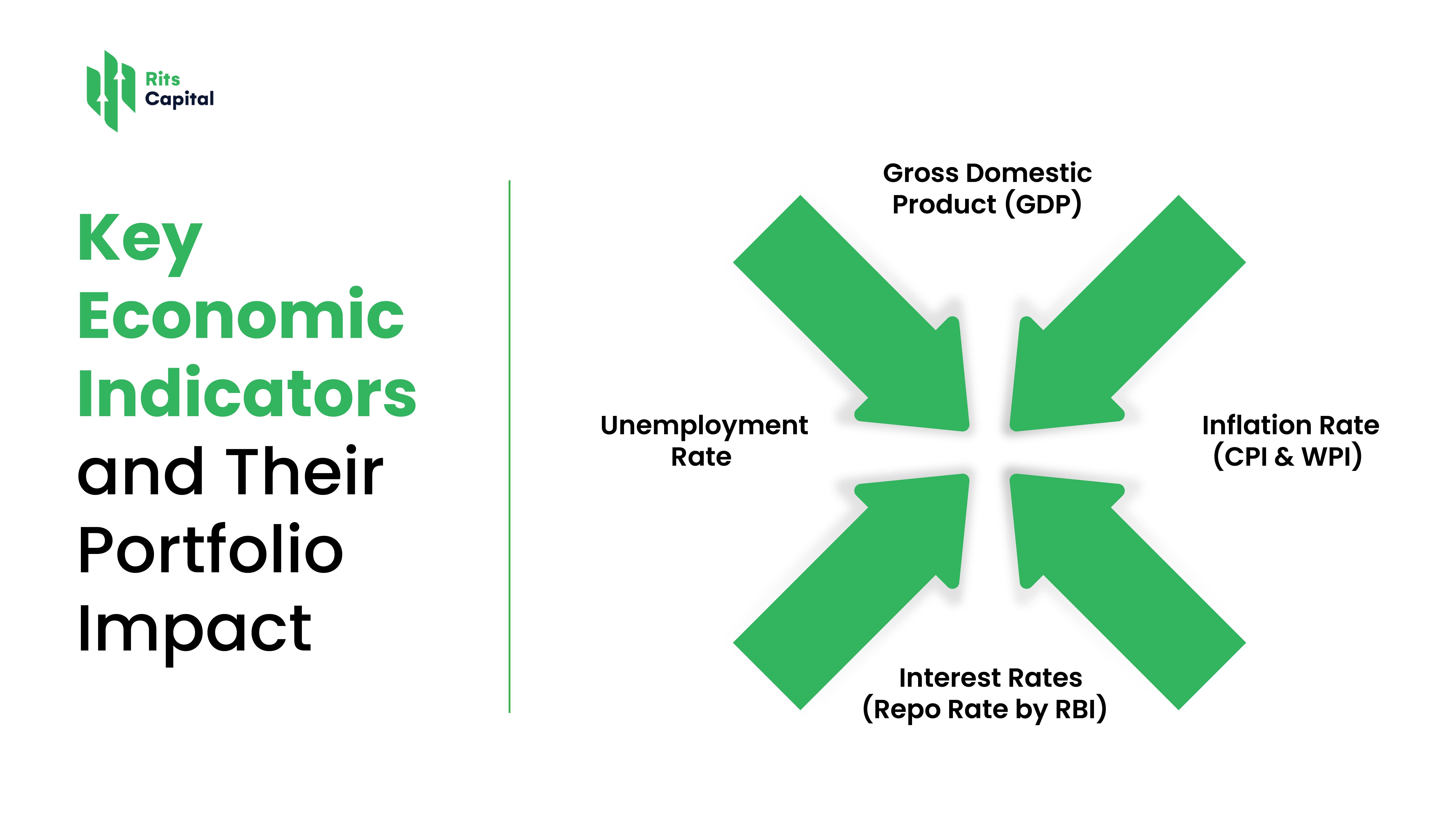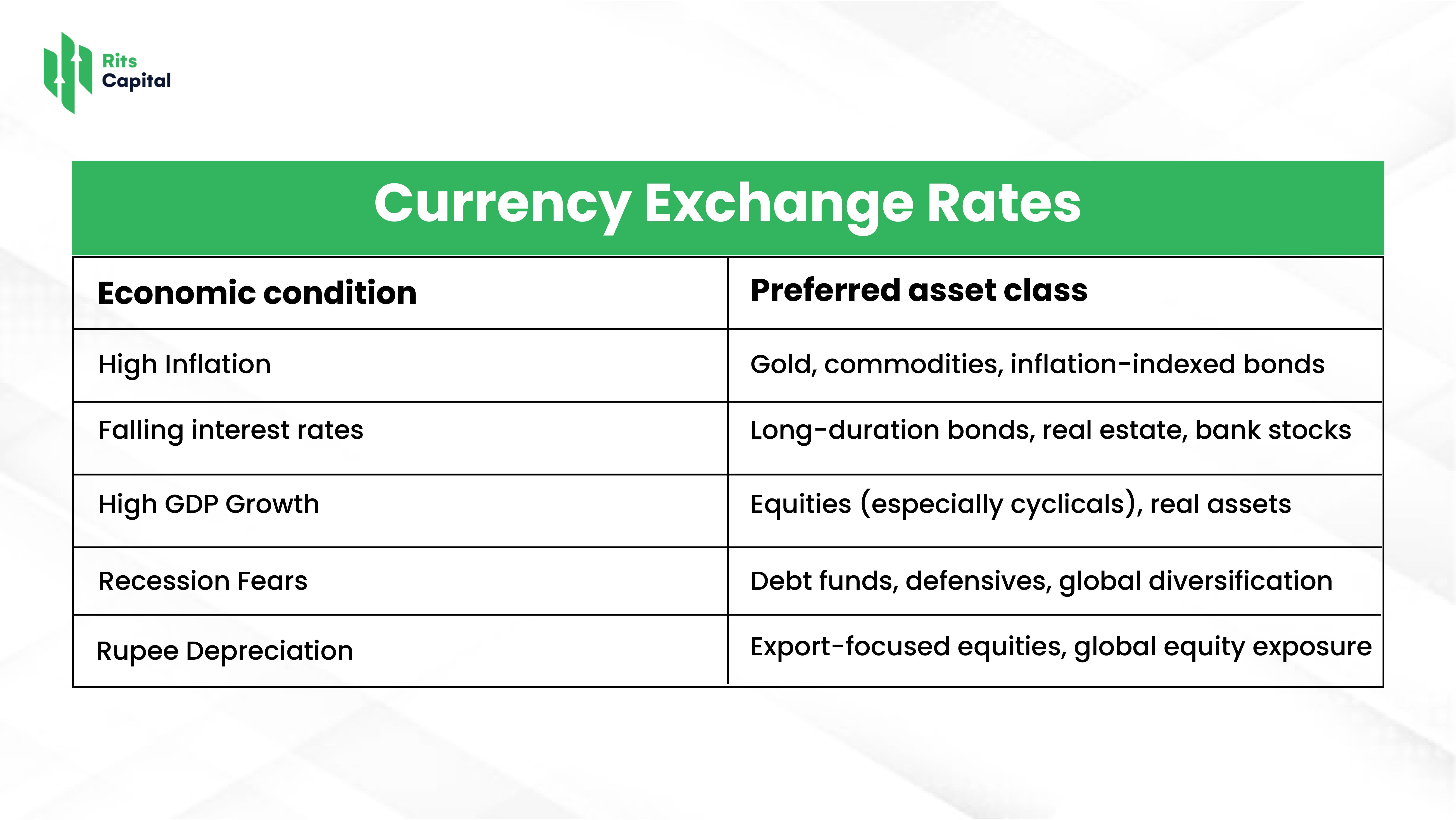The Impact of Economic Indicators on Your Investments Portfolio
Saxena Varun 4 min read 25In the world of investing, timing and information are everything. But what drives market momentum, influences investor sentiment, and causes valuations to rise or fall? The answer lies in one powerful concept: economic indicators.
Understanding how these indicators work and affect your investments is key to building a resilient, high-performing portfolio. At Rits Capital, we empower investors to decode these signals and align their wealth strategies with the macroeconomic environment.
What Are Economic Indicators?
Economic indicators are key statistics that help assess the health and trajectory of a country’s economy. They are released by government bodies, central banks, or independent institutions and fall into three broad categories:
a. Leading indicators – Predict future economic activity (e.g., stock indices, manufacturing PMI).
b. Lagging indicators – Confirm existing trends (e.g., unemployment rate, inflation).
c. Coincident indicators – Move in sync with the economy (e.g., GDP, industrial production).
Investopedia defines economic indicators as “macroeconomic data points used to gauge current or future economic performance.”
Why Economic Indicators Matter for Your Investments?
Your investment portfolio—whether in equities, bonds, real estate, or alternative assets—is constantly exposed to macroeconomic forces. Economic indicators help you:
- Predict market cycles and align your asset allocation
- Adjust risk exposure in times of volatility
- Time market entries and exits
- Spot sectoral and asset class opportunities
At Rits Capital, we integrate these macroeconomic insights into our advisory approach to help clients make smarter, data-driven investment decisions. You can explore our Market Pulse section for the latest updates.
Key Economic Indicators and Their Portfolio Impact

Let’s decode how specific economic indicators impact different asset classes.
1. Gross Domestic Product (GDP)
What it shows: Overall economic output of a country.
Impact on investments:
- A growing GDP indicates robust economic activity—benefiting equity markets, real estate, and corporate bonds.
- A shrinking GDP may lead to risk aversion, prompting investors to shift towards debt and gold.
Investment Insight: During GDP booms, cyclical stocks (e.g., infra, auto, banking) tend to outperform.
2. Inflation Rate (CPI & WPI)
What it shows: Rise in the cost of goods and services over time.
Impact on investments:
- High inflation erodes purchasing power and often prompts central banks to raise interest rates.
- Equities may suffer (especially rate-sensitive sectors like auto or housing).
- Bonds tend to underperform in high inflation due to falling prices.
- Commodities like gold often act as inflation hedges.
Example: From 2021–2023, India’s CPI inflation hovered around 6%, triggering monetary tightening and affecting equity valuations.
3. Interest Rates (Repo Rate by RBI)
What it shows: Cost of borrowing in the economy.
Impact on investments:
- Rising interest rates make borrowing expensive, slowing corporate earnings—negatively impacting stock prices.
- Conversely, rate hikes benefit short-duration debt instruments and FDs.
- Falling rates boost real estate, banking, and consumer sectors.
Investor Tip: Monitor RBI monetary policy reviews closely to rebalance your portfolio.
4. Unemployment Rate
What it shows: Percentage of the labor force that is unemployed and seeking work.
Impact on investments:
- A rising unemployment rate indicates economic stress.
- Consumer demand drops, hitting retail, travel, and discretionary spending sectors.
- Defensive sectors like healthcare, FMCG, and utilities become more attractive.
Strategic Move: In uncertain job markets, build exposure to low-volatility sectors.
Currency Exchange Rates
What it shows: Value of the Indian Rupee against major currencies like the USD.
Impact on investments:
- A falling rupee hurts importers (e.g., oil, electronics), while benefiting exporters (e.g., IT, pharma).
- A weak currency can raise inflation, impacting all asset classes.
Global Investors Note: Currency risk is critical for foreign investments and dollar-based portfolios.
For more technical understanding, read the Wikipedia article on economic indicators.
Portfolio Positioning with Economic Indicators
At Rits Capital, we encourage proactive portfolio management based on macroeconomic data. Here’s how you can use economic indicators strategically:

You can explore our insights on portfolio allocation strategies to learn more.
Real-World Example: COVID-19 to Post-Pandemic Recovery
In March 2020, leading indicators like market indices, PMI, and consumer confidence collapsed. Investors who moved to safety (debt, gold) preserved capital. By late 2020, economic data began recovering—those who acted on GDP growth and improving employment data saw strong equity returns through 2021–22.
Lesson? Watching the right indicators early can help you protect and grow your wealth.
Final Thoughts
Economic indicators aren’t just for economists—they are critical tools for every investor. By understanding the macro landscape, you can:
- Position your portfolio in advance of major shifts
- Minimize risks from inflation, rate changes, or economic slowdowns
- Exploit opportunities in sectors or geographies based on trends
At Rits Capital, our research-backed, macro-aware approach helps clients navigate the markets with clarity and confidence.
Frequently Asked Questions (FAQs)
1. What are economic indicators in simple terms?
They are statistics that show how an economy is performing, such as GDP, inflation, or unemployment rates.
2. How do economic indicators affect my mutual funds or SIPs?
They impact the underlying assets (stocks or bonds) held by your fund. For example, rising interest rates may reduce bond fund returns.
3. Should retail investors track economic data?
Absolutely. It helps you understand market movements and adjust your investment strategy proactively.
4. Where can I check economic indicators regularly?
You can follow RBI bulletins, Ministry of Finance data, or a trusted site like Investopedia.
5. Which indicators are best for short-term investors?
Leading indicators like manufacturing PMI, stock indices, and interest rate expectations are crucial for short-term decisions.
Need help aligning your investments with India’s economic cycles?
Get a personalized portfolio review with Rits Capital. Connect with us here.